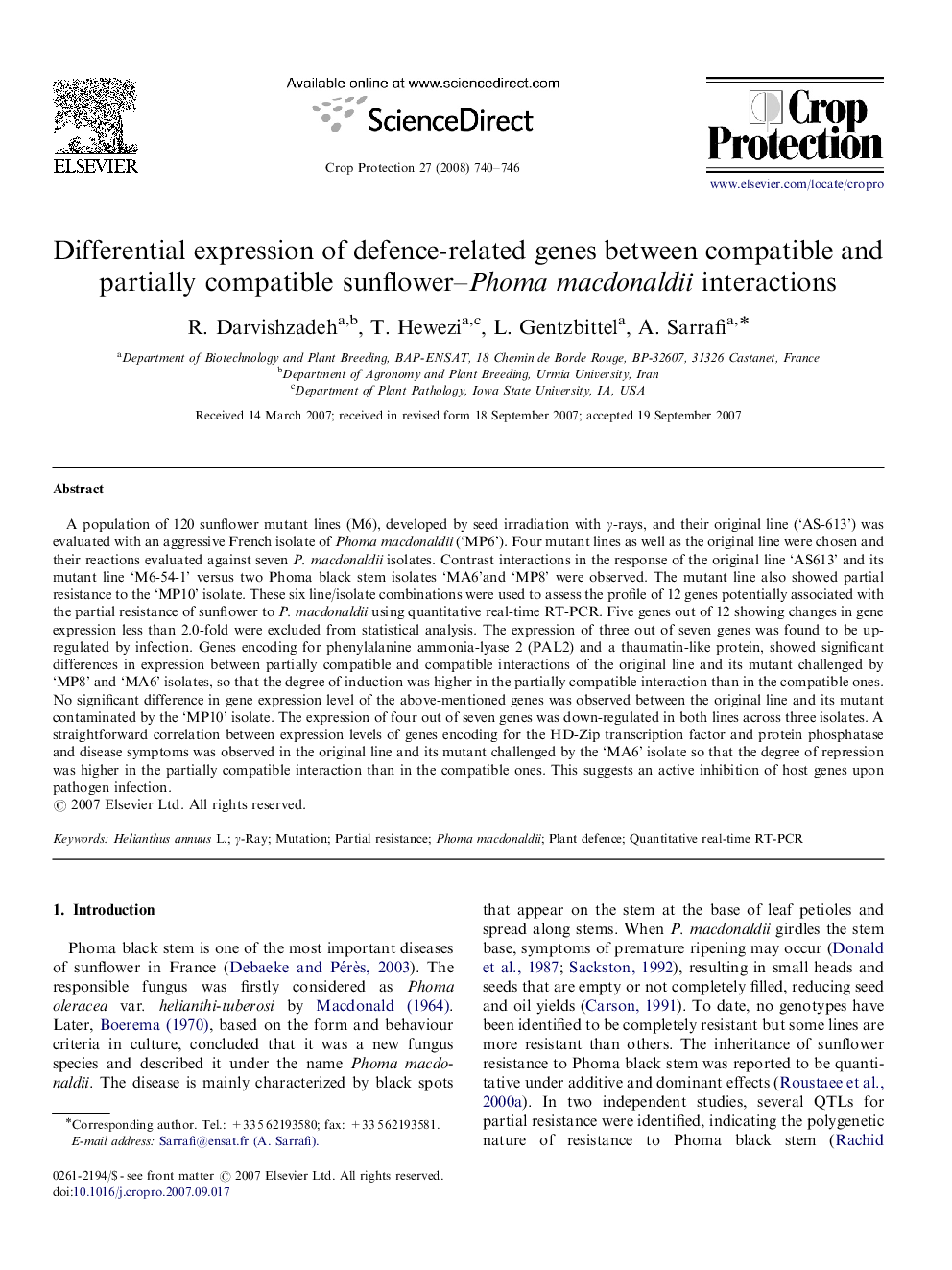| کد مقاله | کد نشریه | سال انتشار | مقاله انگلیسی | نسخه تمام متن |
|---|---|---|---|---|
| 4506974 | 1624357 | 2008 | 7 صفحه PDF | دانلود رایگان |

A population of 120 sunflower mutant lines (M6), developed by seed irradiation with γ-rays, and their original line (‘AS-613’) was evaluated with an aggressive French isolate of Phoma macdonaldii (‘MP6’). Four mutant lines as well as the original line were chosen and their reactions evaluated against seven P. macdonaldii isolates. Contrast interactions in the response of the original line ‘AS613’ and its mutant line ‘M6-54-1’ versus two Phoma black stem isolates ‘MA6’and ‘MP8’ were observed. The mutant line also showed partial resistance to the ‘MP10’ isolate. These six line/isolate combinations were used to assess the profile of 12 genes potentially associated with the partial resistance of sunflower to P. macdonaldii using quantitative real-time RT-PCR. Five genes out of 12 showing changes in gene expression less than 2.0-fold were excluded from statistical analysis. The expression of three out of seven genes was found to be up-regulated by infection. Genes encoding for phenylalanine ammonia-lyase 2 (PAL2) and a thaumatin-like protein, showed significant differences in expression between partially compatible and compatible interactions of the original line and its mutant challenged by ‘MP8’ and ‘MA6’ isolates, so that the degree of induction was higher in the partially compatible interaction than in the compatible ones. No significant difference in gene expression level of the above-mentioned genes was observed between the original line and its mutant contaminated by the ‘MP10’ isolate. The expression of four out of seven genes was down-regulated in both lines across three isolates. A straightforward correlation between expression levels of genes encoding for the HD-Zip transcription factor and protein phosphatase and disease symptoms was observed in the original line and its mutant challenged by the ‘MA6’ isolate so that the degree of repression was higher in the partially compatible interaction than in the compatible ones. This suggests an active inhibition of host genes upon pathogen infection.
Journal: Crop Protection - Volume 27, Issues 3–5, March–May 2008, Pages 740–746